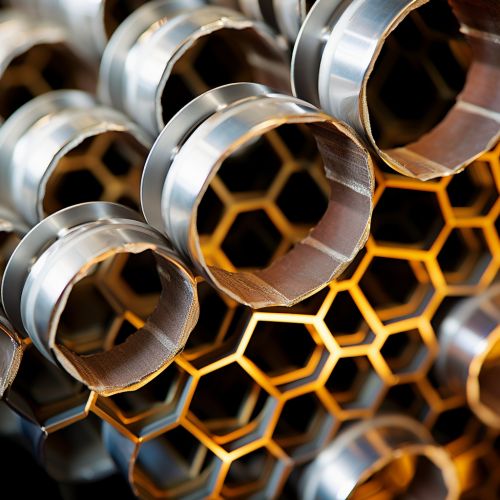Catalytic Converter
Introduction
A catalytic converter is an exhaust emission control device that reduces toxic gases and pollutants in exhaust gas from an internal combustion engine into less-toxic pollutants by catalyzing a redox reaction (an oxidation and a reduction reaction). Catalytic converters are used in internal combustion engines fueled by either petrol (gasoline) or diesel—including lean-burn engines as well as kerosene heaters and stoves.
History
The first catalytic converter was designed by Eugene Houdry, a French mechanical engineer and expert in catalytic oil refining, who lived in the U.S. around 1950. When the results of early studies of smog in Los Angeles were published, Houdry became concerned about the role of smoke stack exhaust and automobile exhaust in air pollution and founded a special company, Oxy-Catalyst, to develop catalytic converters for gasoline engines—an idea ahead of its time for which he was awarded a patent (U.S. Patent 2,742,437). Widespread adoption had to wait until the extremely effective anti-smog controls and automotive emission standards were first introduced in California in 1966, and tightened in 1970 with the passage of the United States Clean Air Act, which required a 90% reduction in automobile emissions by 1975.
Design
A catalytic converter consists of several components:
- The core, or substrate. In modern catalytic converters, this is most often a ceramic honeycomb, however, metallic foil substrates are also used. The honeycomb structure provides a large surface area onto which the catalyst is deposited.
- The washcoat. This is a carrier for the catalytic materials and is used to disperse the materials over a high surface area. Aluminum oxide, titanium dioxide, silicon dioxide, or a mixture of silica and alumina can be used. The washcoat, when added to the core, forms a rough, irregular surface which has a far greater surface area than the flat core surfaces, which helps to ensure that the maximum amount of catalyst comes into contact with the maximum amount of pollutant gases.
- The catalyst itself, most often a precious metal. Platinum is the most active catalyst and is widely used, but is not suitable for all applications because of unwanted additional reactions and high cost. Palladium and rhodium are two other precious metals used. Rhodium is used as a reduction catalyst, palladium is used as an oxidation catalyst, and platinum is used both for reduction and oxidation.


Operation
Catalytic converters operate in an environment of extreme heat and chemical activity. They are placed in the exhaust system of the vehicle, typically close to the engine where exhaust temperatures are highest. This allows the catalyst to heat up quickly and start functioning as soon as possible.
The operation of a catalytic converter relies on the presence of two types of catalysts:
- An oxidation catalyst, which is responsible for oxidizing carbon monoxide (CO) and unburned hydrocarbons (HC) to produce carbon dioxide (CO2) and water (H2O). This is typically achieved with the use of platinum and palladium.
- A reduction catalyst, which is responsible for reducing nitrogen oxides (NOx) to produce nitrogen (N2) and oxygen (O2). This is typically achieved with the use of rhodium.
Types of Catalytic Converters
There are two main types of catalytic converters:
- Two-way converters, which perform two simultaneous tasks: oxidation of carbon monoxide to carbon dioxide and oxidation of hydrocarbons to carbon dioxide and water.
- Three-way converters, which, in addition to the oxidation reactions, reduce nitrogen oxides to nitrogen and oxygen.
Environmental Impact
Catalytic converters have played a key role in reducing the harmful emissions caused by automobiles. They have significantly reduced levels of carbon monoxide, nitrogen oxides, and hydrocarbons released into the atmosphere. However, they are not without their environmental concerns. The production of catalytic converters requires precious metals which are rare and expensive. The mining of these metals can have detrimental effects on the environment. Additionally, while catalytic converters reduce the output of greenhouse gases, they do not eliminate them entirely.
